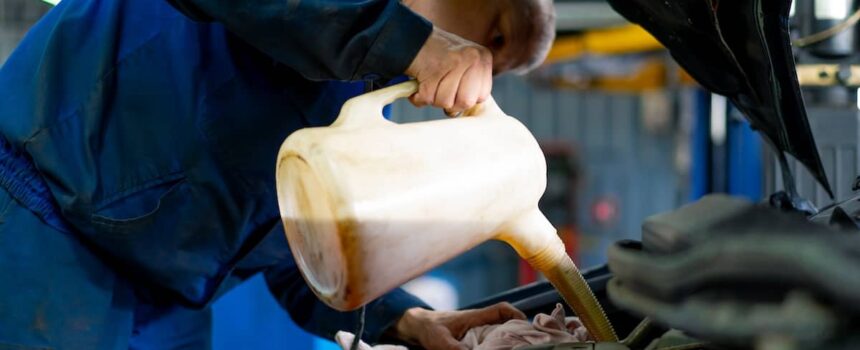Your machines rely on smooth-running lubricants to perform their best. But behind the scenes, the unseen enemy that foam represents could sabotage your oil’s effectiveness. Anti-foam oil additives act as silent guardians, combating this issue and ensuring optimal lubrication performance.
Why Foam Is Bad for Your Oil
Foam in oil might seem harmless, but its formation involves complex interactions between oil and air. At the heart of the issue is how foam disrupts the oil’s natural properties and ability to form a smooth, cohesive film.
Air bubbles can become trapped within the oil during agitation due to machinery operation. This process mirrors the way a whisk whips air into cream. Pumps, churning gears, or splashing oil can introduce air into your equipment, leading to undesirable foam formation.
Understanding Oil Cohesion and Adhesion
Oil molecules naturally adhere to one another, a characteristic called cohesion. This process allows oil to create a smooth, protective film for lubrication. Air also interacts with oil, creating a boundary with surface tension.
Contaminants, such as water, debris, or other substances, can disrupt this surface tension. These contaminants function similarly to surfactants, weakening the boundary between oil and air. A weakened boundary causes air bubbles to form and remain within the oil, compromising effectiveness. The mechanics are similar to how soap breaks down the surface tension of water and forms bubbles.
Once formed, air bubbles within oil exhibit an inherent tendency to merge and create larger structures. This process is governed by factors such as Brownian motion, which causes microscopic particles to move randomly and collide, and pressure differences within the oil system, which can force bubbles together.
These chemical forces promote the merging of smaller bubbles, resulting in a more significant and problematic level of foam. Foam hinders the flow of oil in the following ways:
- Viscosity Alteration: The presence of foam drastically increases the oil’s effective viscosity. This thicker, more coagulated mixture struggles to reach critical components promptly, compromising essential lubrication.
- Lubrication Failure: Foam disrupts the essential film oil creates between moving parts. This reduction of lubrication leads to an increase in friction and severe wear. In extreme cases, this lack of lubrication can cause components to seize or weld together.
- Thermal Issues: Foam, acting as a thermal insulator, impedes the oil’s crucial function of dissipating heat generated within the machinery. Trapped heat can cause components to overheat, risking significant damage or even catastrophic breakdown.
- Sludge and Harmful Deposit Buildup: Foam increases the contact between oil and air, accelerating the oil breakdown at high temperatures. Breakdown leads to the buildup of sludge and other harmful deposits. Additionally, foamy oil loses its ability to effectively flush away contaminants from the surfaces of critical components.
- Safety Hazard: Excess foam can cause lubricating oil to expand and overflow its tank, creating a potential fire hazard and leading to oil waste.
Comprehending the science behind foam formation allows us to develop additives that effectively prevent it. Using these oil additives makes you more likely to get optimal performance from your engines and other machinery.
Real World Examples
Foam in lubricating oils might seem minor, but its consequences can be severe. Excess foam jeopardizes lubrication, contributes to accelerated wear, and causes overheating. All of these issues can lead to costly repairs and downtime down the road. Here’s a look at some specific scenarios where foam wreaks havoc:
Engines
Hydraulic Valve Lifters: Foamy oil can lead to noisy hydraulic lifters (causing ticking sounds) due to the compressibility of air within the system. Excess air reduces valve lift and compromises engine performance.
Crankshaft Bearings: Foam interferes with oil film formation within bearings, resulting in increased friction and rapid wear. In severe cases, this can cause catastrophic bearing failure.
Oil Pump Cavitation: Air bubbles can disrupt the function of oil pumps, leading to cavitation (the formation and collapse of vapor pockets). Cavitation causes erratic oil pressure, potentially starving critical engine components of lubrication.
Industrial Machinery
Gearboxes: Foam in gearboxes contributes to increased wear on gear teeth and bearings. The entrained air bubbles can also lead to a condition known as “micro-pitting,” where tiny pits form on the gear surfaces, further accelerating wear.
Hydraulic Systems: Foam impairs the performance of hydraulic systems, causing sluggish operation, reduced precision, and potential seal failures.
Turbines: In turbines, foam can negatively impact bearing lubrication and destabilize oil pressure control systems.
Choosing the Right Oil Additives
Finding the optimal anti-foam additive requires careful consideration. Different industrial applications, types of oil, and a whole range of factors influence which additives perform best. Don’t rely on educated guesses—choosing the right solution is essential for protecting your equipment.
Several factors need attention when selecting anti-foam additives. Consider the oil’s operating temperature range, as additives function differently in hot or cold conditions. Additionally, compatibility with the specific oil base is crucial, and the additive needs to withstand shear forces within the machinery.
Don’t face the anti-foam additive selection process alone. Consult with experts, like Allegheny Petroleum, to find the best solution. Our experience and technical resources can guide you toward the optimal choice for your machinery and prevent costly mistakes. Feel free to request a Product Data Sheet (PDS) to learn more about our anti-foam additives and lubricants with anti-foam additives.
For nearly thirty years, Allegheny Petroleum has supplied America’s machinery, big and small, with lubricant additives. As the largest additive manufacturer in North America, we supply packagers, blenders, refinery service companies, and additive companies.
We offer Altra-branded lubricant additives, octane improvers, diesel detergent packages, diesel stabilizers, cold filter plug point additives, and multi-functional packages. Check out our Products page to learn more.
Conclusion
Foam in oil has a surprisingly destructive impact, hindering lubrication, accelerating wear, and contributing to equipment failure. Anti-foam additives are crucial protectors—they disrupt harmful bubbles, restoring oil’s ability to perform vital functions.
With over 25 years of experience, Allegheny Petroleum has proven technical knowledge and expertise in various industries. Our research and development department has an onsite lab and staff of 12 chemists tasked with creating new and innovative solutions and products. Our employees are consistently trained and updated on the latest industry trends.
We’re also happy to provide recommendations and product cross-references for our clients so they can make educated decisions. Contact us today to learn more about our Altra branded lubricant additives and other products.

